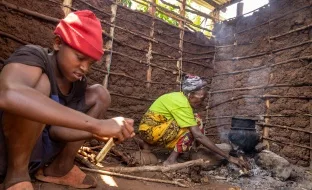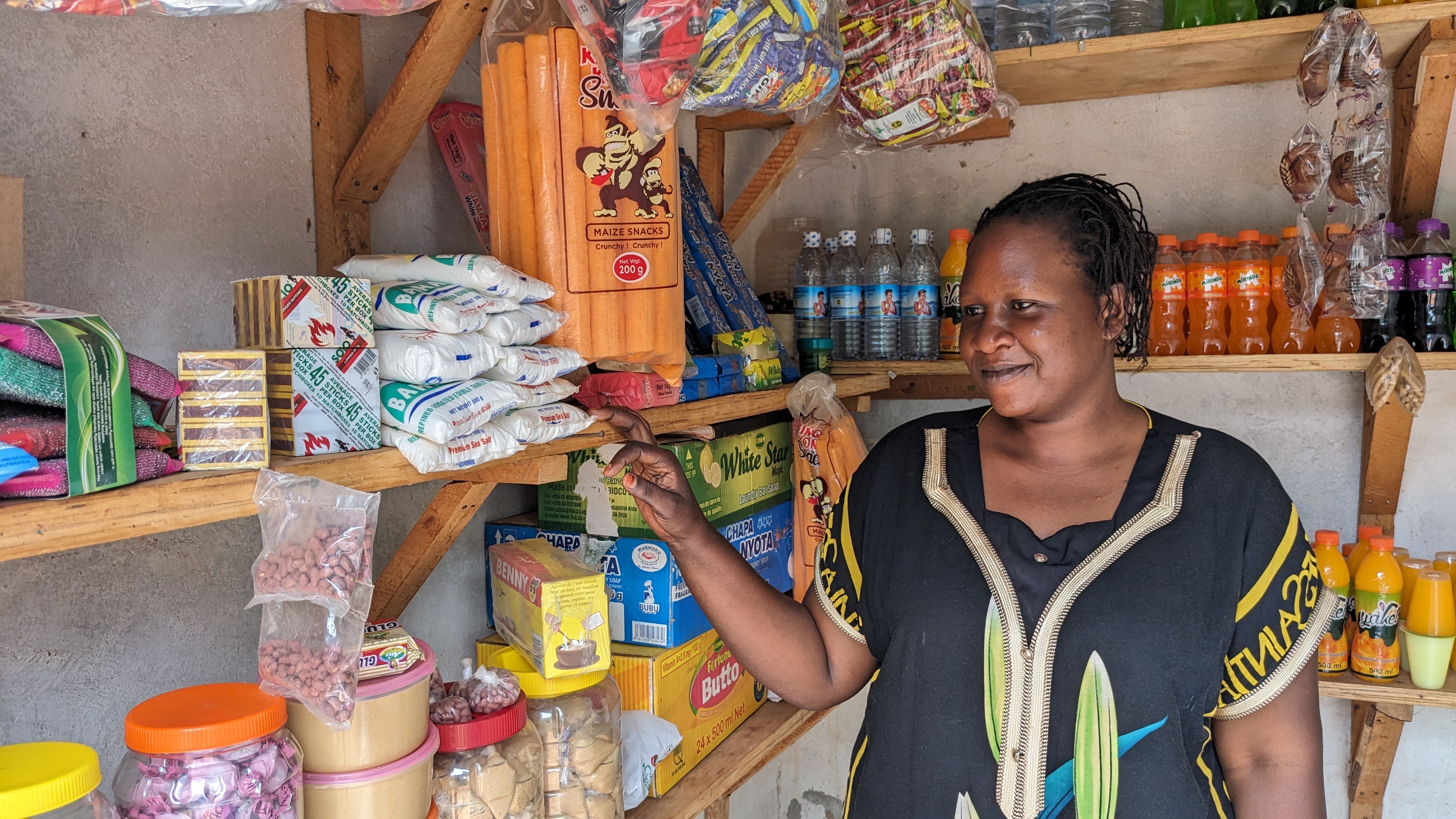Summary
- While the rate has dropped globally, the number of Africans living in extreme poverty has only risen in the past 30 years and will likely continue to do so.
- Giving people money (known as ‘cash transfers’) is an evidenced and scalable way to accelerate the end extreme poverty, but it is still significantly under-funded and under-utilized.
- You can double your donation through these match opportunities, and beyond donating, we need your help to grow the movement.
Tuesday marks the International Day for the Eradication of Poverty, a U.N. observance to rally support for their number one goal and a good chance to take stock of where that goal stands.1
Poverty can mean many things, but extreme poverty has a specific definition: $2.15 per day. This line, set by the World Bank, is an estimate of what a person needs to afford a basic basket of goods including food, clothing, and shelter. It’s a rough measure of how many live in unacceptable deprivation in our wealthy world.2
While this metric is limited, it’s also quite descriptive. The many symptoms of poverty – disease, starvation, education deprivation, psychological suffering – are improved when a family is less monetarily poor, and further still when their whole community is less poor.
Extreme poverty has not declined everywhere and is not on track to end
A growing chorus of commentators have pointed out that extreme poverty has been dropping precipitously.3 This optimism is useful to fight the cynicism that poverty cannot be addressed, but it can mask some concerning truths.
The number of Sub-Saharan Africans in extreme poverty has only risen, and today most people in extreme poverty live on the continent. As a percentage of population, their poverty rate has dropped; however, the percentage tells a sunnier story than the reality that more Sub-Saharan Africans cannot afford their most basic needs today as 3 decades ago (approx. 432M vs. 271M).4
Today, nearly two-thirds of the 690M people in extreme poverty live in Sub-Saharan Africa. By the end of the decade, there will still be >500M and nearly all of them will be Africans. Extreme poverty persists where it is most stuck: in fragile countries with high population growth. By some projections, the Democratic Republic of the Congo and Nigeria will be home to more than 40% of the extreme poor by 2050.5
With unconditional cash, people in poverty can reduce their suffering
Nearly everyone in extreme poverty is born into it but unable to afford a path to escape. Consider these commons stories:
- 🌾 Your crops fail because the cost of better seeds or irrigation is too high.
- 🩺 You’re too ill to work but cannot afford treatment.
- 🥘 You can’t afford nutritious food for your kids, worsening their health and development.
- 🌀You live in the path of worsening climate disasters but cannot afford to move.
- 🎒You didn’t go to school and cannot pay fees for your kids to go and build a better life.
- 💵 You have a good business idea but no capital to start.
Many could pursue such high-return opportunities but for a lack of capital. Cash transfers work because they give people the agency to meet these individual needs. Research finds they use these funds to improve their health, education, income, and self-reliance, ultimately driving reductions in adult and child mortality. And these results can be sustained years into the future.6
Cash can scale easily and the benefits multiply
Giving cash is uniquely scalable. It’s impactful nearly everywhere that extreme poverty persists. Addressing diseases like malaria or river-blindness would reduce suffering, but they are only endemic in some but not all places with extreme poverty. And while giving half a billion people a cash transfer would be very complex, it’s essentially possible with the technology and organizations that already exists today.7
And as cash transfers are spent by recipients, the cash multiplies. New research finds that because people spend this money locally buying goods, starting businesses, visiting clinics, or going to school, the local economy can grow by as much as 2.5x what you give. In effect, the money you give benefits not just the recipient but their neighbors.8
A cash transfer is the boost many need to escape poverty
Cash transfers alone will not eradicate extreme poverty, as countries also need essential public goods like access to healthcare, well-maintained infrastructure, and dependable institutions to foster a thriving economy. However, cash transfers are still needed to help people take full advantage of these resources. Take Rwanda as an example:
- Over the past three decades, Rwanda has maintained peace and security, with the GDP growing annually by 5-10%.
- The government has invested in education and healthcare, providing subsidies to make them widely accessible.
- Despite these commendable strides, over half of Rwandans still live in extreme poverty.9
This is why Rwanda is now using cash transfers as part of their social safety net to help their poorest citizens take full advantage of these other opportunities.10 Even China, widely recognized for its economic growth and poverty reduction efforts, is using cash transfers to lift the final ~1% of their population out of extreme poverty.11
Extreme poverty is still solvable with your help
The theoretical amount needed to move everyone above the extreme poverty line for a year is $100B. The actual cost of reaching everyone is likely a few times bigger, even still a small amount relative to available funding sources.12
GiveDirectly cannot end extreme poverty alone, but we do have the capacity to absorb and deliver billions more each year. Together with African governments, we can run much larger programs and more robust evidence on the effects at scale. The larger the demonstration GiveDirectly does, the more irrefutable the case for ending extreme poverty through cash becomes, convincing more philanthropists and donor countries to give effectively. Official Development Assistance topped $200B last year, but <5% was given as cash transfers – imagine the good that would be done if half that money was given directly.13
When you give directly, you’re not just changing a life – you’re supporting an intervention with a plausible path to end extreme poverty. In this sense, people in extreme poverty need both your donations and your advocacy. Here’s how you can help:
Give a cash transfer through GiveDirectly or maximize your impact this month with a match through our global donation partners:
- Australia via EA Australia
- New Zealand via EA New Zealand
- Spain via Ayuda Efectiva
- U.S. via Every.org and Charityvest
Share this post and the resources below widely to help grow the movement. We can show philanthropists and policymakers who control hundreds of billions of dollars there’s an effective use for their money right now:
Footnotes
- Poverty Eradication Day + UN #1 goal
- World Bank – the $2.15 is in purchasing power parity dollars to allow for cross-country comparison. The international line is calculated as the median national poverty line among low-income countries, and in some contexts might not even be sufficient for a person to cover their basic needs.
- E.g. Steven Pinker, Our World in Data (more), World Bank, Vox, & this recent popular tweet
- Overall poverty decline data + poverty percentage data + 271M in 1990 + 432M in 2023 (noting: post-2019 numbers are based on World Bank estimates and may shift after population survey data is collected).
- 690M source + >500M source + current African poverty rate source + DRC/Nigeria source – read more on fragility and conflict.
- Source on reducing adult & child mortality. Two examples of long-term cash impact: Uganda (12 years), Mexico (20 years).
- Cash can be targeted and delivered fully remotely, reaching people in dispersed rural settings or dense urban slums. Maps of extreme poverty, malaria, and river-blindness prevalence. 2021 estimates: 247M cases of malaria (assuming each case a unique person) and 711M people in extreme poverty.
- Multiplier effect study – Researchers also found minimal inflationary effects: “Average price inflation is 0.1%, and even during periods with the largest transfers, estimated price effects are less than 1%.” It’s worth noting that the charity evaluator GiveWell does not currently factor in these multiplier research results into their cost effectiveness analysis for GiveDirectly.
- GDP growth and poverty data from World Bank. For more on Rwanda’s healthcare system, read here.
- Source on Rwandan gov’t using cash transfers. Beyond cash transfers, Rwanda has implemented a range of poverty alleviation programs, including vocational training, job creation initiatives, and social safety nets. By combining investments in public goods with targeted poverty reduction measures, they’ve created a comprehensive approach to both empower individuals and communities to escape the grip of extreme poverty and build a better future.
- China using cash transfers to reach rural poor – for more on why we should not expect extreme poverty to “solve itself” overtime through economic growth alone, read here.
- Brookings estimates the amount of money that would be theoretically needed to lift the incomes of all people in extreme poverty up to the International Poverty Line to be $100B. By comparison, Americans spend ~$120B on their pets every year. The practical cost of actually reaching everyone in extreme poverty has been estimated at 2-3x this, though we can also expect it to reduce over time as people use the money to escape poverty.
- It’s likely that less than 5% of official development assistance goes to cash programming — though no one is tracking the exact amount. For more, see EAGxNordics talk from Mathias Bonde (Centre for Effective Aid Policy) and Rachel Waddell (GiveDirectly)

